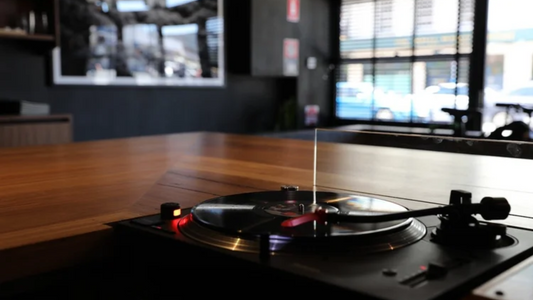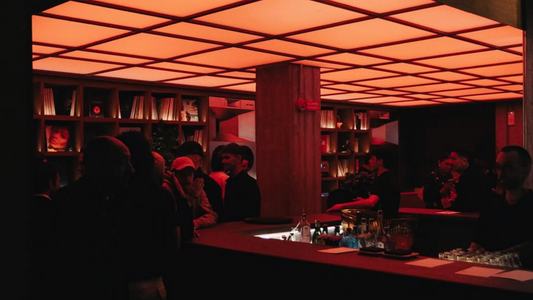
The Right Glass: How Vessels Shape the Way We Drink and Listen
By Rafi Mercer
I can still remember the first time I realised the glass mattered. Not just as a container, but as part of the drink itself. It was when I worked at Majestic Wine in Mayfair and South Kensington, long before I had thought much about sound or ritual. I was introduced to fine stemware — Riedel, I think it was — the kind of glass designed specifically for Bordeaux or Burgundy, champagne or Riesling. At first I thought it was theatre. But the moment I tried the same wine in two different glasses, I understood: the shape, the weight, the feel in the hand — all of it changed the experience.
Since then, I’ve never looked at glassware the same way. A delicate coupe transforms a cocktail into something to be savoured, the fragility slowing you down, making each sip feel more precious. A heavy-bottomed tumbler does the opposite: it grounds you. Hold one with a measure of whisky inside and you don’t need anything else — no ice, no fuss. The weight of the glass becomes the ballast, a reminder that the moment is enough.
The right glass doesn’t just change how a drink tastes; it changes how you value it. A flute stretches champagne into something celebratory, sending the bubbles racing. A wide bowl lets a red wine breathe, opening flavours you’d miss otherwise. Even the rim matters — thin and smooth, or thick and sturdy — guiding how the liquid enters your mouth, how it lands on the tongue. What seems small at first changes everything.
And isn’t that the same lesson we learn in listening? The vessel shapes the experience. A record played through a finely tuned system sounds different than one blasted through a laptop speaker. The same music, the same notes — but the way it reaches you alters your perception, your memory, your sense of presence. The container matters as much as the content.
What I love most is how glassware, like sound systems, slows you down if you let it. A fragile stem in your hand makes you careful. You sip with intent, conscious of the balance. A weighted glass invites you to pause between mouthfuls, to rest it on the table and feel its cool solidity. In both cases, the drink stretches out, lasts longer, lingers deeper. The vessel teaches patience.
Over the years I’ve realised this is true across cultures. In Japan, whisky highballs are often served in tall, narrow glasses, built to keep fizz tight and the spirit crisp. In Italy, an espresso comes in a tiny cup that forces you to savour just two mouthfuls. In France, the coupe was once the height of glamour, its shallow bowl turning every sip into a gesture. Every culture has understood: the way you hold something changes the way you consume it.
At Majestic, those early lessons in stemware felt like a curiosity. Now I see them as part of a larger pattern. Just as a listening bar tunes every detail — room, system, vinyl — so too does a true bar or home ritual consider the glass, the ice, the pour. It’s not about luxury. It’s about care. Care for the drink, care for the moment, care for yourself.
So today, when I reach for a whisky, I think about the glass as much as the spirit. I know how it will make me hold the drink, how it will change my pace, how it will shape the memory. Because the truth is simple: we don’t just drink with our mouths. We drink with our hands, our eyes, our ears. The sound of ice against crystal, the glow of liquid through glass, the weight in the palm. These are as much a part of the ritual as the whisky itself.
And just like with music, the right vessel can turn something ordinary into something unforgettable.
Rafi Mercer writes about the spaces where music matters. For more stories from Tracks & Tales, subscribe here, or click here to read more.






